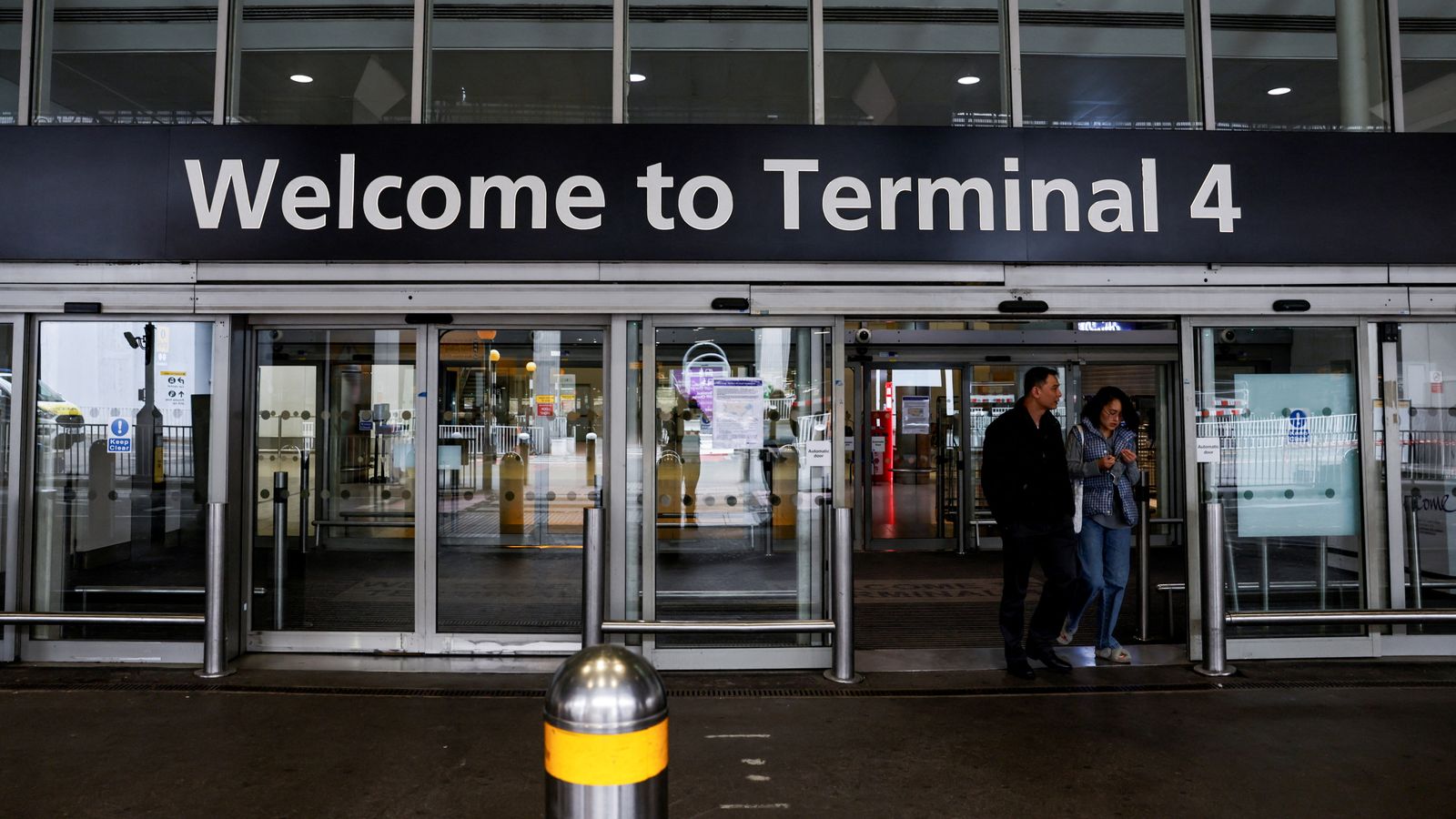Something wasn’t rightThe London Airport emergency began without warning at at Heathrow on Monday evening. Passengers in Terminal 4 were going about their usual business – checking in, grabbing last-minute snacks, saying goodbye to loved ones – when suddenly, everything changed. The London Airport emergency that unfolded would see hundreds of travellers evacuated in what became one of the most dramatic incidents at Britain’s busiest airport this year.
Passengers were wheeling their suitcases through the terminal when airport staff suddenly started telling everyone to leave. Not walk – leave, right now. That’s exactly what happened around 5pm when emergency services received reports of a possible hazardous materials incident.
When Things Got Serious Fast
The London Fire Brigade responded immediately. Within minutes, specialist crews from Feltham, Heathrow, Wembley and surrounding stations were racing to the scene. We’re talking about the kind of response you’d see in a disaster movie – firefighters in full protective gear, hazmat suits, and emergency vehicles everywhere.
“Terminal 4 check-in has been closed and evacuated while emergency services respond to an incident,” Heathrow Airport announced on social media. “Please do not travel to Terminal 4.”
But here’s what made this London Airport emergency particularly scary for those involved – nobody knew what they were dealing with.
Twenty People Down

Around twenty passengers reported feeling unwell during the incident. The London Ambulance Service treated 21 people at the scene, with one person taken to hospital as a precaution. Thankfully, none of the injuries were life-threatening, but imagine being there when people around you started feeling ill.
“None were deemed to be life-threatening or life-changing,” the Metropolitan Police confirmed later. But when you’re in the middle of a London Airport emergency like this, those reassurances come later – much later.
Videos shared on social media showed crowds of passengers standing outside the terminal, some wrapped in foil blankets to keep warm as the evening got chilly. Airport staff handed out water and tried to keep everyone calm, but you could see the worry on people’s faces.
The Investigation Unfolds
Here’s where the story gets interesting. After three hours of intensive searching, specialist officers made a crucial discovery – or rather, they didn’t discover anything at all.
“Service and conducted a thorough search of the area. No trace of any adverse substance was found,” the Metropolitan Police announced.
So what actually caused the London Airport emergency? The investigation is still ongoing, but some experts are suggesting it might’ve been a case of mass hysteria – where one person feeling unwell can trigger a chain reaction in a crowded space.
It sounds far-fetched, but it’s more common than you’d think. In stressful environments like airports, where people are already anxious about travel, security, and tight schedules, these incidents can snowball quickly.
Back to Business
By 8pm, Terminal 4 was declared safe and passengers could return. The London Airport emergency was officially over, but the disruption continued into the evening. Train services to Terminal 4 were suspended during the incident, and while flights weren’t cancelled, passengers faced delays and confusion.
“Emergency services have confirmed Terminal 4 is safe to reopen and we are doing everything we can to ensure all flights depart as planned today,” a Heathrow spokesperson said. “We are very sorry for the disruption caused.”
The terminal serves major airlines including Air France, Qatar Airways, Korean Air, and China Southern, so the London Airport emergency affected travellers from around the world.
Not Heathrow’s First Rodeo
This wasn’t Heathrow’s first brush with chaos this year. Back in March, a fire at an electrical substation knocked out power to the entire airport, forcing them to shut down completely and affecting over 1,000 flights. Pilots had to divert mid-flight, passengers were stranded, and British Airways alone lost over £50 million.
That London Airport emergency lasted a full day and caused global travel disruption. Compared to that, Monday’s three-hour evacuation seems almost minor – though it probably didn’t feel that way if you were one of the passengers standing outside in the evening chill.
What Happens Next?
The London Fire Brigade says the cause remains under investigation. Airport authorities are reviewing their emergency procedures, and passengers are slowly getting back to their normal routines.
For travellers, this London Airport emergency serves as a reminder of how quickly things can change at airports. One minute you’re checking your phone for gate updates, the next you’re being evacuated by emergency services.
Terminal 4 has had its share of ups and downs. It was closed for two years during the pandemic and only reopened in June 2022 after major refurbishments. The terminal’s air conditioning, bathrooms, and baggage systems all got upgrades during the closure.
But as Monday’s London Airport emergency showed, sometimes the most sophisticated equipment can’t prevent the unexpected.
The Human Side
What struck many observers was how calmly passengers handled the evacuation. Despite not knowing what was happening or why they needed to leave, people followed instructions and looked out for each other.
“Colleagues are supporting passengers on site,” Heathrow confirmed, and those colleagues deserve credit for managing a potentially chaotic situation with professionalism.
The London Airport emergency could’ve been much worse. In an age where we’re all worried about security threats and dangerous incidents, the fact that this turned out to be a false alarm – albeit one that made 20 people feel ill – is actually good news.
For the passengers involved, though, it was still a frightening experience that they won’t forget anytime soon. Nothing quite prepares you for being evacuated from an airport terminal by firefighters in hazmat suits.
As investigations continue, this London Airport emergency will likely become a case study in how quickly situations can escalate – and how important it is to have robust emergency procedures in place, even when the threat turns out to be less serious than first feared.
